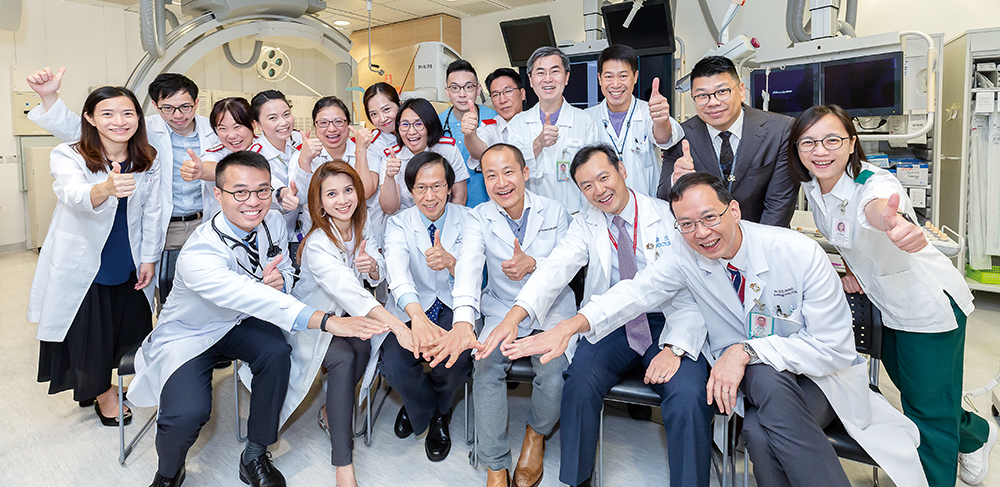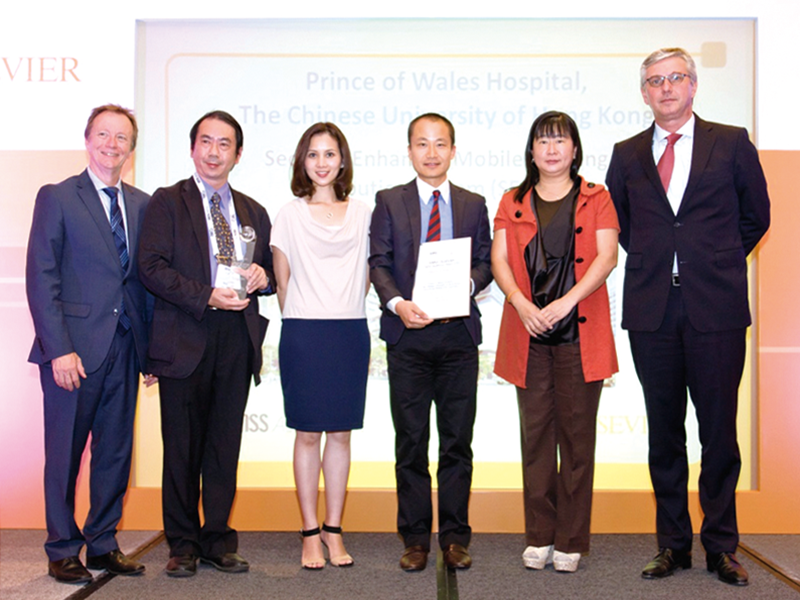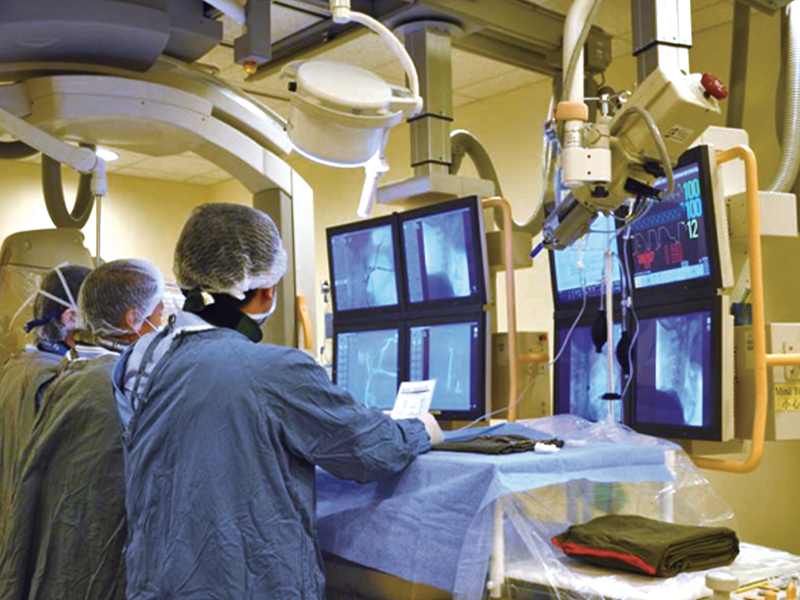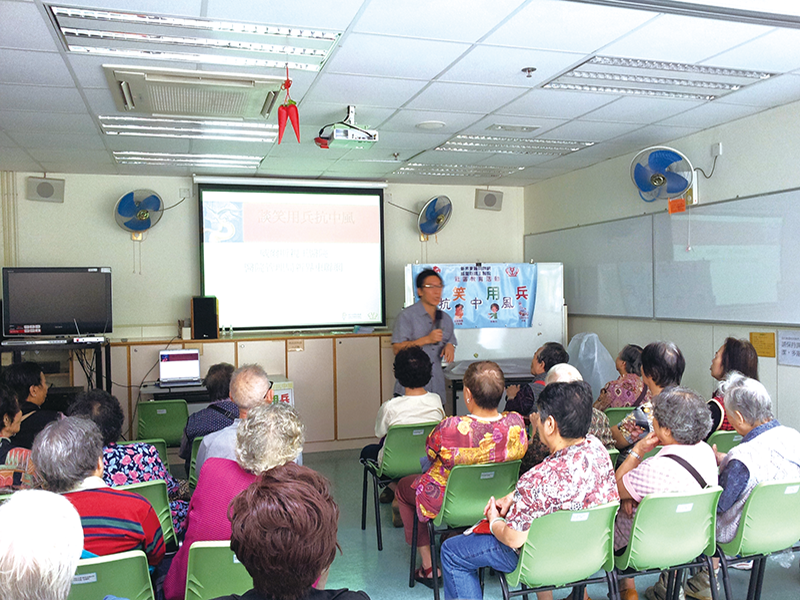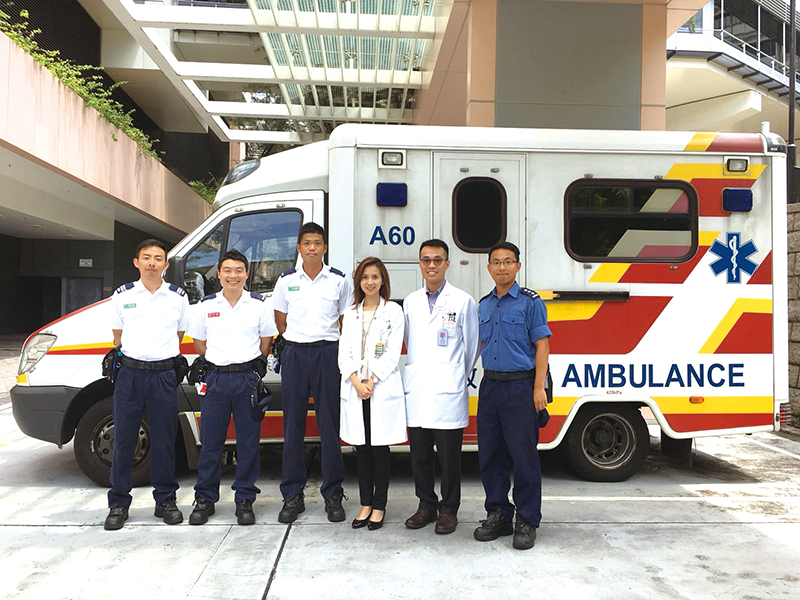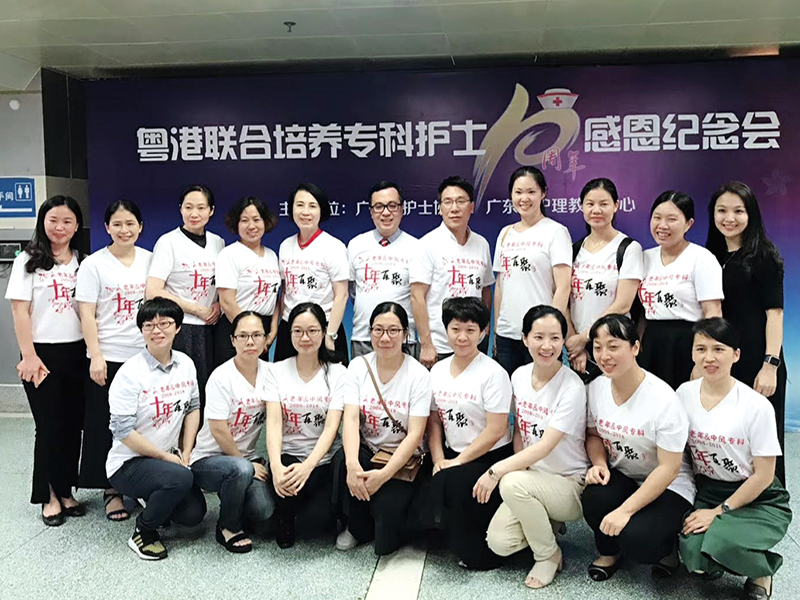Stroke Team
Prince of Wales Hospital
Stay true and fight stroke
Every six seconds, one person in the world suffers from stroke, which is also the fourth leading cause of death in Hong Kong. Associate Professor of Department of Medicine and Therapeutics Dr Thomas Leung joined hands with various departments, including Accident and Emergency (A&E), Neurology, Radiology and Allied Health to enhance the service quality for stroke patients by streamlining workflow and introducing new hardware, software and technology.
Dr Leung stresses that the team has been inventing new measures all these years to enhance service quality. In 2007, they successfully conducted the first endovascular thrombectomy operation in Hong Kong, a minimally invasive surgery which timely removes an obstructive clot from a cerebral artery, salvaging the ischemic brain. Seven years ago, ‘24-hour Tele-stroke Programme’ was implemented in collaboration with The Chinese University of Hong Kong and The Hong Kong Polytechnic University in which doctors can conduct offsite tele-consultation with the assistance of nurses. Neurologists can also check patient’s medical history and computed tomography (CT) images on a smartphone. As a result, thrombolytic therapy can be delivered to save life by trained nurses with knowledge and skills on stroke even there is no on-site neurologists. The team received Asia-Pacific ‘Outstanding Health Information and Technology Award’ from Healthcare Information and Management Systems Society in 2013.
New initiatives in refined workflow waste no time in saving life. The team launched the ‘Pre-hospital Stroke Notification Programme’ with Sha Tin ambulancemen. Once an ambulanceman encounters a suspected stroke case, he will inform a designated team at Prince of Wales Hospital immediately. It triggers off a series preparation, namely notifying relevant colleagues to receive the patient at A&E, studying patient’s medical history and reserving a CT suite for immediate scanning upon arrival. All these facilitate treatment within three hours for a greater chance of recovery. The team also trained ambulancemen about stroke symptoms; and visited state-of-the-art stroke facilities in Germany with senior management of the Fire Services Department and learned from foreign successful cases. After a pilot scheme, statistics reveals a substantial improvement: the time from arrival at A&E to diagnosis drops from 40 minutes to only eight minutes; and the duration from arrival at A&E to thrombolysis treatment shortens from 60 minutes to 16 minutes.
Software support, such as medical staff training and public education, is as important as hardware. The team has worked with HA Institute of Health Care since 2010 to provide acute stroke training for nurses, and organised training and exchanges with Stroke Society and nursing schools in Guangdong province in the past 10 years. Moreover, pamphlets are produced and updated regularly, talks and workshops have been held since 1995 to raise public awareness of stroke, including stroke symptoms and rehabilitation training.
Maggie Lau, Advanced Practice Nurse, says that changes in the workflow have strengthened the role of nurses. “We were mainly involved in patients’ post-operative care in the past. But now we take part in an earlier stage or even making clinical decisions with doctors. Seeing patients recover, the happiness and satisfaction double.”
Dr Leung adds, “It is challenging to get consensus from various departments, so we convince everyone with evidence. After all, we walk an extra mile to help patients with our heart and treat them as our family and friends. We do not forget why we did this job at the beginning, and we stay true to our heart and mind all along. This is the key to success.”

● Insights from outstanding colleagues
OUTSTANDING STAFF
● List of Outstanding Staff Award winners
● Zealous physician rises up to challenges
● Veteran nurse advocates multifaceted wound care development
● Triple skill craftsman smoothens rehabilitation journey
● Passionate guardian upkeeps hospital hygiene
● Psychiatrist stands up for community rehab
OUTSTANDING TEAM
● List of Outstanding Team Award winners
● Round-the-clock invincible heart protectors
● Four must-haves of life-saving CCL
● Seven hospitals go for eco-culture
● Seamless palliative care makes kids’ lives complete
● Caring towards a less distressing departure
● Lights in darkness: What team members do
YOUNG ACHIEVER
● List of Young Achiever Award winners
● Nurse-paraglider opens patient’s heart over coffee break
● Saving lives in sleepless nights
● Cleft lip babies glow with smiling faces again
● Regain mobility, regain hope
● Evidence-based nursing care without walls
● And so rehabilitation goes… in the neighbourhood
● Pass on Dad’s spirit of teaching
● Trust your heart, be a role model
● Pioneer VR in simulation training
● Innovation always on doctor’s radar
● Building services no trifle in hospital operations
● Rheumatic pain eased with close monitoring
MERIT STAFF AND TEAMS

